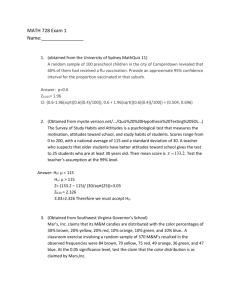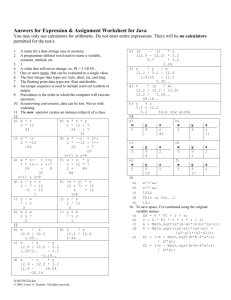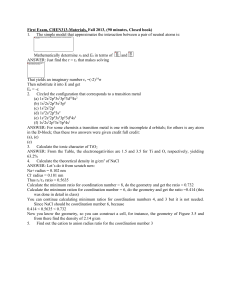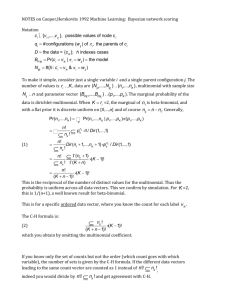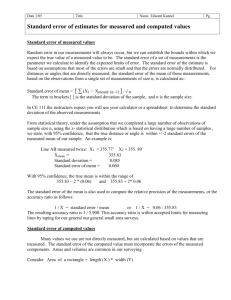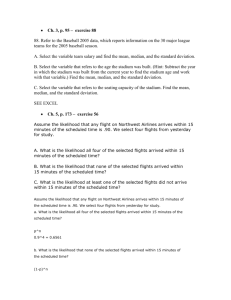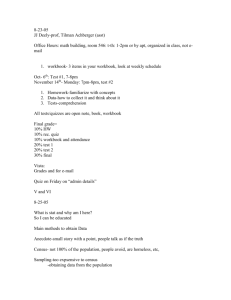The fracture strength of a certain type of manufactured glass is
advertisement
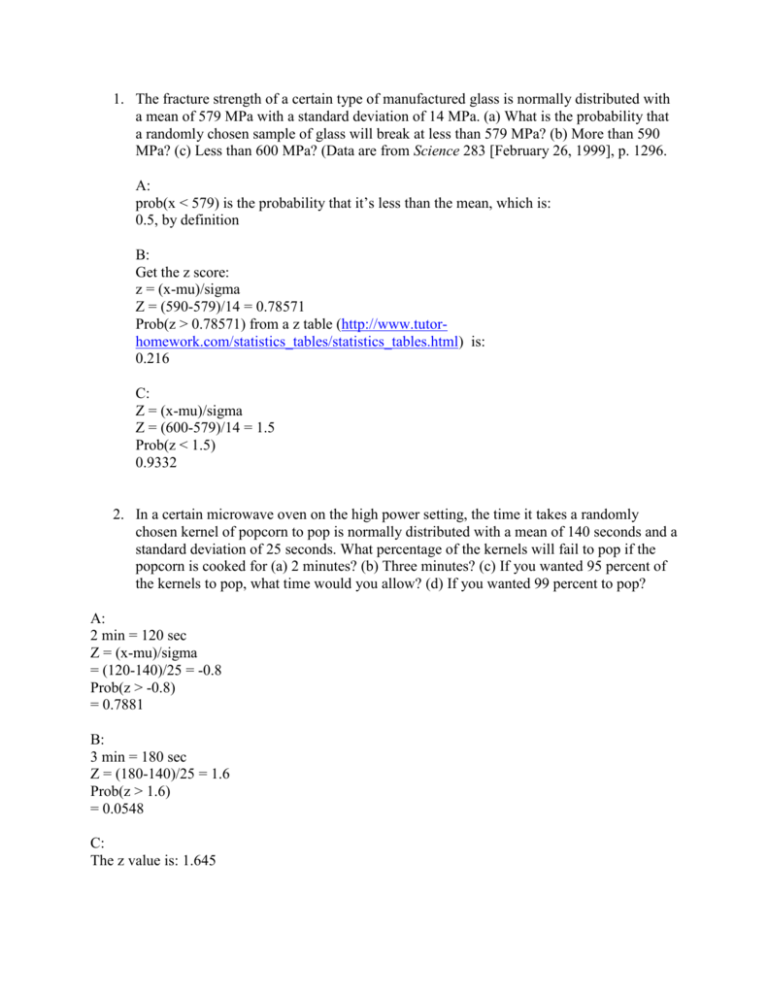
1. The fracture strength of a certain type of manufactured glass is normally distributed with a mean of 579 MPa with a standard deviation of 14 MPa. (a) What is the probability that a randomly chosen sample of glass will break at less than 579 MPa? (b) More than 590 MPa? (c) Less than 600 MPa? (Data are from Science 283 [February 26, 1999], p. 1296. A: prob(x < 579) is the probability that it’s less than the mean, which is: 0.5, by definition B: Get the z score: z = (x-mu)/sigma Z = (590-579)/14 = 0.78571 Prob(z > 0.78571) from a z table (http://www.tutorhomework.com/statistics_tables/statistics_tables.html) is: 0.216 C: Z = (x-mu)/sigma Z = (600-579)/14 = 1.5 Prob(z < 1.5) 0.9332 2. In a certain microwave oven on the high power setting, the time it takes a randomly chosen kernel of popcorn to pop is normally distributed with a mean of 140 seconds and a standard deviation of 25 seconds. What percentage of the kernels will fail to pop if the popcorn is cooked for (a) 2 minutes? (b) Three minutes? (c) If you wanted 95 percent of the kernels to pop, what time would you allow? (d) If you wanted 99 percent to pop? A: 2 min = 120 sec Z = (x-mu)/sigma = (120-140)/25 = -0.8 Prob(z > -0.8) = 0.7881 B: 3 min = 180 sec Z = (180-140)/25 = 1.6 Prob(z > 1.6) = 0.0548 C: The z value is: 1.645 X = z*sigma + mu = 1.645*25 + 140 = 181.125 sec D: Z = 2.326 X = z*sigma + mu = 2.326*25 + 140 = 198.15 sec 3. Statistics students were asked to go home and fill a 1-cup measure with raisin bran, tap the cup lightly on the counter three times to settle the contents, if necessary add more raisin bran to bring the contents exactly up to the 1-cup line, spread the contents on a large plate, and count the raisins. For the 13 students who chose Kellogg’s brand the reported results were 23 33 44 36 29 42 31 33 61 36 34 23 24 (a) Construct a 90 percent confidence interval for the mean number of raisins per cup. Show your work clearly. (b) Can you think of features of the sample or data-gathering method that might create problems? If so, how could they be improved? (c) Identify factors that might prevent Kellogg’s from achieving uniformity in the number of raisins per cup of raisin bran. (d) How might a quality control system work to produce more uniform quantities of raisins, assuming that improvement is desired? A: Using Excel, the mean is: 34.53846 The standard deviation is: 10.3087 The t value for 90% confidence, with df=n-1 = 12 is: 1.782 The interval goes from: Mean – t*sd/sqrt(N) to Mean + t*sd/sqrt(N) 34.35846-1.782*10.3087/sqrt(13) to 34.35846+1.782*10.3087/sqrt(13) Which is: 29.2635 to 39.4534 B: Not everyone’s flakes have settled in the same way, so even though they all have 1 cup, there is probably more air gaps in some of the cups than others. To be more consistent, they could do it by weight instead of volume. C: The cereal may be packaged at different plants, and they might not be consistent. One component of the machine may get “stuck” from time to time, giving more or less raisins. D: They can inspect random boxes of the cereal to be sure that a consistent number of raisins are getting into each box. If a certain line of boxes is out of whack, they can fix the problem. 4. The U.S. Customs Service conducted a random check of Miami longshoremen and found that 36 of 50 had arrest records. (a) Construct a 90 percent confidence interval for the true proportion. (b) Is the sample size large enough to be convincing? Explain. (c) How would you select a random sample of longshoremen? A: The z value for 90% confidence is 1.6449. The interval goes from: p-z*sqrt(p*(1-p)/N) to p+z*sqrt(p*(1-p)/N) p = 36/50 = 0.72 0.72-1.6449*sqrt(0.72*0.28/50) to 0.72+1.6449*sqrt(0.72*0.28/50) Which is: 0.6156 to 0.8244 B: The sample is not large enough to be convincing, since there are probably thousands of longshoremen, and perhaps they randomly sampled from only one port or one shift of workers. C: I would make sure that it was a random sample, by shift, location, etc. In addition, I would sample at least 200 people.

